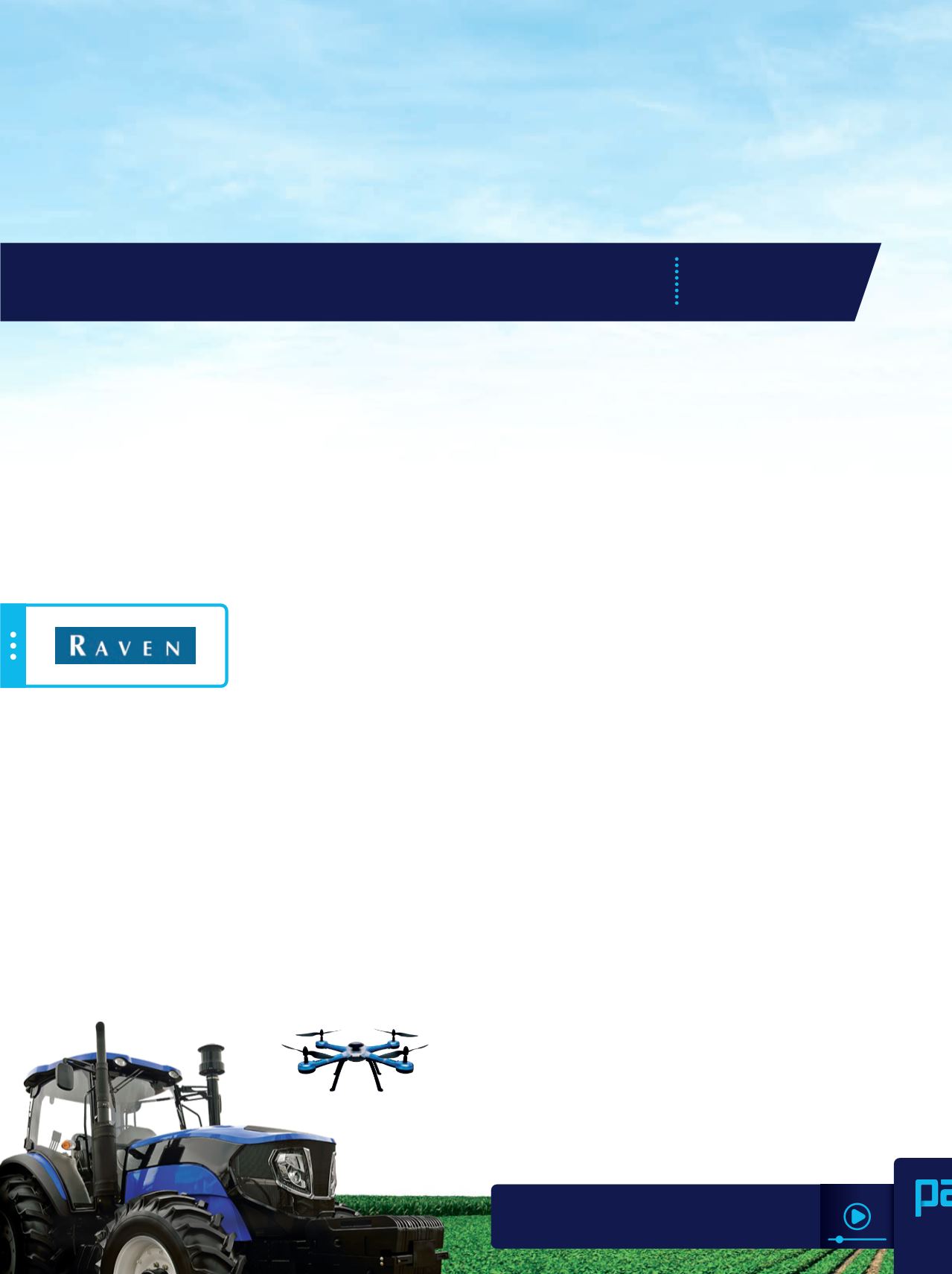

21
WATCH THE VIDEO
THE PATH TO AN
AUTONOMOUS FARM
Changes in the world brought on by
COVID-19 and other factors are affecting
the agriculture sector.
“The pandemic has created a renewed awareness
that we have a fragile labour pool in agriculture,” Ben
Voss, director of sales for North America and Australia
with
Raven Precision ,told
2021 Farms.com Virtual Precision Agriculture Conference and Technology Showcaseattendees in November.
“We just can’t find workers
anymore. There aren’t kids
growing up on farms like
there used to be with natural
skills (and) borders have been closed for a while so we
can’t necessarily have temporary foreign workers to
work on farms.”
This is where automation can assist the industry.
Voss demonstrated a path to autonomy with level 0 as
traditional farming with no precision technology and
level 5 as full autonomy.
Most farms are operating at level 2, which has
coordination and optimization, or level 3, which
includes real-time automation.
Getting to level 5 on-farm, however, can be a
challenge.
Rural communities often lack adequate
broadband access other infrastructure
required to use technology on the farm fully.
But today’s climate related to food security,
sustainability and other topics may lend itself
to expedited adoption, Voss said.
“The urgency is different today given the market
conditions we’re in, the escalated interest in food
security and the supply chain issues that are harming
our economy,” he said.
He described the move towards automation as a “war-
effort.”
Farmers may need to learn new skills and push
through obstacles to ensure they’re positioned for an
autonomous future.
“If you don’t know how to diagnose electronics then
you’re going to struggle,” Voss said. “The grower is
going to have to be okay with more technology.”
Many farmers are already using some sort of
automation, like GPS and boom controls.
But these forms of precision ag still require a driver in
the cab.
That is likely to change in the future, Voss said.
“We’re heading toward full autonomy where you can
imagine equipment running and you’re remotely
monitoring it,” he said. “It’s not that far away.”
|
pag
Labour constraints are pushing people towards automation
DIEGO FLAMMINI
FARMS.COM
PHOTOS: DS70/E+ via Getty Images, stefann11/iStock/Getty Images Plus,
hudiemm/iStock/Getty Images Plus
















